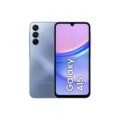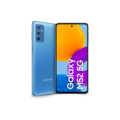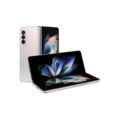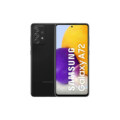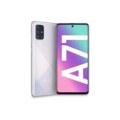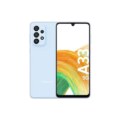Samsung Galaxy Tab S9 Plus



Specs
General
| Device Type | Samsung Tab |
| Model | Galaxy Tab S9 Plus |
| Announced | 27 July, 2023 |
| Status | Available |
Design
| Water Resistant | IP68 dust/water resistant (up to 1.5m for 30 min) |
| Dimensions | 285.4 x 185.4 x 5.7 mm |
| Weight | 586 g |
| Protection | Glass front, aluminum frame, aluminum back |
| Colors |
Beige Graphite |
Display
| Refresh Rate | 120 Hz |
| Display Type Display Technology => A number of display technologies and types used in mobile phones => TFT (Thin Film Transistor), IPS (In-Place Switching), OLED (Organic Light Emitting Diode), AMOLED (Active-Matrix Organic Light-Emitting Diode), Super AMOLED (an even advanced version of AMOLED), Resistive Touchscreen (Resistive touchscreens contain two layer of conductive material with a very small gap between them which acts as a resistance), Capacitive Touchsceen (Capacitive touchscreen technology consists of a layer of glass coated with a transparent conductor) | Dynamic AMOLED 2X |
| Size | 12.4 inches |
| Resolution | 1752 x 2800 pixels |
| Pixel Density Pixel Density (PPI) is refers to the concentration of pixels on a particular display, measured in pixels per inch (ppi). Pixel density is calculated by dividing the diagonal pixel resolution of a display by its diagonal size, higher pixel density better display quality. | ~ 243 ppi |
| Touch Screen | Capacitive Touchscreen, Multi-touch |
| Display Protection Display Protection => Gorilla Glass is a special alkali-aluminosilicate glass shield with exceptional damage resistance that helps protect mobile displays from scratches, drops, and bumps of everyday use, It is always better to go for a smartphone with Gorilla Glass for that added protection and peace of mind. | Corning Gorilla Glass |
| Secondary Display | No |
Camera
| Front Camera | 12 MP |
| Camera Setup | Double |
| Main Camera Camera is able to capture photographs and usually videos, The most important characteristics of a camera are the resolution (measured in megapixels), lens focus type (fixed or automatic), higher megapixel cameras are known to capture higher quality photos, but not always a good measurement of the photos quality. |
13 MP, f/2.0, 26mm (wide) 8 MP, f/2.2, (ultrawide) |
| Image | 3264 x 2448 Pixels |
| Video | 4K@30fps, 1080p@30fps |
| Camera Features | HDR, panorama |
| Flash Flash Light => There is commonly two types of flash lights are used in camera mobile phones, LED Flash (LED flash offers lower power consumption with drive circuitry that takes up very little room, LEDs can be strobed faster than any other light source), Xenon Flash (xenon flash produces an extremely intense full-spectrum white light for a very short duration) | LED flash |
Hardware
| Operating System OS => Every computer system run on a base software called Operating System (OS). Operating System controls all basic operations of the computer (such as smartphone, PDAs, tablet computers and other handheld devices). The Operating System allows the user to install and run third party applications (apps), apps are used to add new functionality to the device. | Android 13 |
| Chipset Chipset is a group of integrated circuits designed to perform one or a more dedicated functions, often with real time computing constraints, Popular smartphones are equipped with more advanced embedded chipsets that can do many different tasks depending on their programming. | Qualcomm SM8550-AC Snapdragon 8 Gen 2 |
| CPU CPU (Central Processing Unit) mostly known as processors, CPU processes instructions in order to carry out certain functions that make your device operate properly. Processors are often described as the brain of computers, smartphones and tablets, Smartphones and tablets rely on processors to carry out their every task, Processors are an incredibly important factor in selecting any type of computing device, including your smartphone. | Octa-core (1x3.36 GHz Cortex-X3 & 2x2.8 GHz Cortex-A715 & 2x2.8 GHz Cortex-A710 & 3x2.0 GHz Cortex-A510) |
| Architecture | 64 bit |
| Fabrication | 4 nm |
| GPU GPU (Graphics Processing Unit) is a single-chip processor designed to rapidly manipulate and alter memory to accelerate the creation of images in a frame buffer intended for output to a display, This includes things such as lighting effects, object transformations, and 3D motion. | Adreno 740 |
| RAM (Memory) RAM (Random Access Memory) is a type of computer memory that can be accessed randomly, any byte of memory can be accessed without touching the preceding bytes that allows information to be stored and accessed quickly from random locations. RAM is the most common type of memory found in computer systems, smartphones, tablets and other electronic devices. | 12GB RAM |
| Internal Storage Internal Storage is a data storage space (flash memory) mostly used in smartphones, tablets and other electronic devices where operating system, apps, music, photos, videos, files and other user data Is stored. | 256/512 GB Built-in |
| Card Slot Memory Card Slot is a special slot for inserting a memory card. Memory cards allow you to expand the phone's built-in memory, A memory card (sometimes called a flash memory card or a storage card) is a small storage medium used to store data such as text, pictures, audio, and video, for use on small, portable or remote computing devices such as mobile phones, mp3 players, digital cameras. | |
| Sensors Sensors are electronic components that detects and responds to some type of input from the physical environment. The specific input could be light, heat, motion, moisture, pressure and location, The output is generally a signal that is converted to use in computing systems, a location sensor, such as a GPS receiver is able to detect current location of your electronic device. | Fingerprint (under display, optical), accelerometer, gyro, proximity, compass |
Network
| SIM TYPE SIM (Subscriber Identity Module) is a small card that contains mobile network subscriber's account information. This allows the phone using the card to attach to a mobile network. The SIM card is most commonly associated with GSM and UMTS mobile networks. Moving a SIM card from one phone to another allows a subscriber to switch mobile phones without having to contact their mobile network carrier. SIM cards can also be used by a phone to store limited amounts of data, such as phone numbers and text messages. | Nano SIM |
| SIM Technology | Nano-SIM |
| 2G Network | GSM 850 / 900 / 1800 / 1900 |
| 3G Network | HSDPA 850 / 900 / 1700(AWS) / 1900 / 2100 |
| 4G Network |
LTE |
| 5G Network | SA/NSA/Sub6 |
Multimedia
| FM Radio | |
| Stereo Speakers | YES |
| Loudspeaker | YES |
| Audio Jack | NO |
| Audio Features | Tuned by AKG |
Connectivity
| Wi-fi Wi-Fi is a popular wireless networking technology using radio waves to provide high-speed network connections that allows devices to communicate without cords or cables, Wi-Fi is increasingly becoming the preferred mode of internet connectivity all over the world. | Wi-Fi 802.11 a/b/g/n/ac/6e, tri-band, Wi-Fi Direct |
| Bluetooth Bluetooth is a wireless communications technology for exchanging data between mobile phones, headsets, computers and other network devices over short distances without wires, Bluetooth technology was primarily designed to support simple wireless networking of personal consumer devices. | 5.3, A2DP, LE |
| GPS GPS The Global Positioning System is a satellite-based radio navigation system, GPS permits users to determine their position, velocity and the time 24 hours a day, in all weather, anywhere in the world, In order to locate your position, your device or GPS receiver must have a clear view of the sky. | GPS, GLONASS, BDS, GALILEO |
| USB | USB Type-C 3.2, magnetic connector |
| EDGE EDGE (Enhanced Data GSM Environment) is a wireless network technology generally considered the next step in the 2G network offers data transfer rates up to four times faster than ordinary GSM networks, Generally, EDGE is used for the purpose of wireless data transfer, such as sharing pictures and videos or browsing the Internet via a mobile phone connection. | |
| GPRS GPRS (General Packet Radio Service) is a packet oriented mobile data service on the 2G and 3G cellular communication system's global system for mobile communications (GSM), Generally, GPRS is used for the purpose of wireless data transfer, such as sharing pictures and videos or browsing the Internet via a mobile phone connection. | |
| Speed | 3G HSPA 4G LTE, 5G |
| Wi-fi Hotspot | |
| NFC NFC (Near field communication) is a set of standards for smartphones and similar devices to establish peer-to-peer radio communications with each other by touching them together or bringing them into proximity, usually no more than a few inches. |
Features
| Messaging | SMS(threaded view), MMS, Email, Push Mail, IM |
| Web Browser Web Browser => a web browser is a software application used to locate, retrieve and display content on the World Wide Web, including Web pages, images, video and other files, The primary function of a web browser is to render HTML, the code used to design or markup webpages. | HTML5 |
| Games | Built-in + Downloadable |
| Torch |
Battery
| Battery Type Battery Type => Cell phones run on various kinds of batteries depending on the manufacturer, phone size or shape and features. There are basically four types of cell phone batteries => Lithium Polymer, Lithium Ion, Nickel Metal Hydride and Nickel Cadmium. | Li-Po |
| Capacity Battery Capacity is a measure (typically in Amp-hr) of the charge stored by the battery, and is determined by the mass of active material contained in the battery. The battery capacity represents the maximum amount of energy that can be extracted from the battery under certain conditions. | 10090 mAh |
| Placement | Non-removable |
| Wireless Charging Wireless Charging (Inductive Charging) uses an electromagnetic field to transfer energy between two objects. This is usually done with a charging station. Energy is sent through an inductive coupling to an electrical device, which can then use that energy to charge batteries or run the device. | No |
| Extra | 45W wired |
Samsung Galaxy Tab S9 Plus
Samsung’s latest premium tablet, bridging the gap between tablet and laptop functionality. With an impressive display, powerful performance, and a design crafted for versatility, the Tab S9 Plus is aimed at productivity enthusiasts, creatives, and multimedia consumers alike. Here’s an in-depth look at what makes the Galaxy Tab S9 Plus stand out.
Design
The Galaxy Tab S9 Plus maintains Samsung’s hallmark sleek and minimalist design. Constructed with an aluminum frame and a thin profile, it feels robust yet surprisingly light for a tablet its size. Samsung has slightly slimmed down the bezels, allowing for a larger screen-to-body ratio, which enhances its immersive appeal. The tablet is also IP68-rated, making it one of the few premium tablets with water and dust resistance, adding a layer of durability and portability.
Dimensions: 285.4 x 185.4 x 5.7 mm
Weight: Approximately 586 grams
Colors: Graphite, Beige
Display
The Galaxy Tab S9 Plus is equipped with a 12.4-inch Dynamic AMOLED 2X display that offers vibrant colors, deep contrasts, and a fluid refresh rate of 120Hz. This refresh rate can dynamically adjust based on what’s on the screen, preserving battery life when full power isn’t needed. The 2800 x 1752-pixel resolution brings crisp details, making it ideal for both media consumption and professional tasks like graphic design.
Samsung’s Vision Booster technology enhances brightness levels, making the screen easy to view in direct sunlight, a handy feature for those working outdoors or in bright environments. The AMOLED display, known for its vivid colors and deep blacks, is particularly satisfying for multimedia consumption and creative work.
Performance
Under the hood, the Tab S9 Plus is powered by the Qualcomm Snapdragon 8 Gen 2 processor, offering exceptional performance on par with high-end smartphones. Paired with 12GB of RAM, multitasking is smooth and responsive, even when handling resource-intensive applications. The Galaxy Tab S9 Plus is available in 256GB and 512GB storage configurations, with the option to expand up to 1TB via microSD, which is ideal for users with extensive storage needs.
Operating System: One UI 5.1 based on Android 13
Processor: Qualcomm Snapdragon 8 Gen 2
RAM: 12GB
Storage: 256GB or 512GB, expandable with microSD
Camera
The Galaxy Tab S9 Plus comes with a dual-camera setup on the back, featuring a 13MP main camera and an 8MP ultra-wide camera. While tablets aren’t typically known for their cameras, the S9 Plus does a respectable job, especially for those who use it for scanning documents, video calls, or quick snapshots. Samsung has also focused on enhancing the front camera, upgrading it to a 12MP ultra-wide for better video calls and selfies.
Camera performance in good lighting is solid, and the ultra-wide lens is useful for capturing larger scenes or group photos. However, the camera’s low-light performance is modest, in line with expectations for tablets.
Battery Life
The Samsung Galaxy Tab S9 Plus packs a 10,090mAh battery, which can comfortably support a full day of use. It supports 45W fast charging, allowing for quick recharges that minimize downtime. Battery life can vary depending on usage, with power-intensive tasks like gaming or video editing consuming more, but average daily activities, including browsing, watching videos, and note-taking, will likely see the tablet through a long day.
Software and S Pen Functionality
The Tab S9 Plus runs on One UI 5.1 based on Android 13, which offers a smooth and highly customizable interface. One UI is optimized for the large screen, supporting features like multi-window functionality, split-screen, and pop-up view, making multitasking more seamless. Samsung DeX, included as well, can transform the tablet into a desktop-like experience, useful for productivity tasks.
The tablet comes with Samsung’s S Pen, now included in the box. The S Pen magnetically attaches to the back of the device for storage and charging, adding convenience. It’s also IP68-rated, making it resilient to dust and water. The S Pen is highly responsive, with minimal lag, and supports a variety of features, from note-taking and sketching to precise photo editing and creative applications.
Audio
The Galaxy Tab S9 Plus is equipped with quad AKG-tuned speakers that deliver high-quality audio output. Dolby Atmos support adds to the immersive audio experience, making it an excellent tablet for watching movies or streaming music. The sound quality is clear and detailed, with enough volume to fill a small room, which enhances the multimedia experience.
Pros and Cons
Pros:
- Stunning 12.4-inch Dynamic AMOLED 2X display with 120Hz refresh rate
- Powerful Snapdragon 8 Gen 2 processor for smooth multitasking and gaming
- S Pen included with IP68 rating, ideal for creatives and productivity
- Samsung DeX support for enhanced productivity
- IP68 water and dust resistance, unique in the tablet category
- Long-lasting battery life with fast-charging support
Cons:
- The camera quality is modest, particularly in low light
- Premium pricing, positioning it as a high-end choice
- Limited to Samsung’s One UI; some users might prefer a more stock Android experience

Verdict
The Samsung Galaxy Tab S9 Plus stands out as one of the best Android tablets in 2023, delivering on performance, display quality, and versatile productivity features. Samsung’s decision to include the S Pen and the tablet’s IP68 rating add significant value, making it appealing for those looking to invest in a high-quality, durable tablet for both work and play. It’s a great option for creatives who need a large canvas, professionals looking for a laptop alternative, and anyone who wants a top-tier multimedia experience on an Android device. However, it comes at a premium price, which might not appeal to casual tablet users.
Review
Disclaimer Note
All prices in Pakistan is updated daily from the price list provided by local shops and dealers but we can not guarantee that the information / price on this page is 100% correct (Human error is possible), always visit your local shop for exact cell phone cost & rate.
